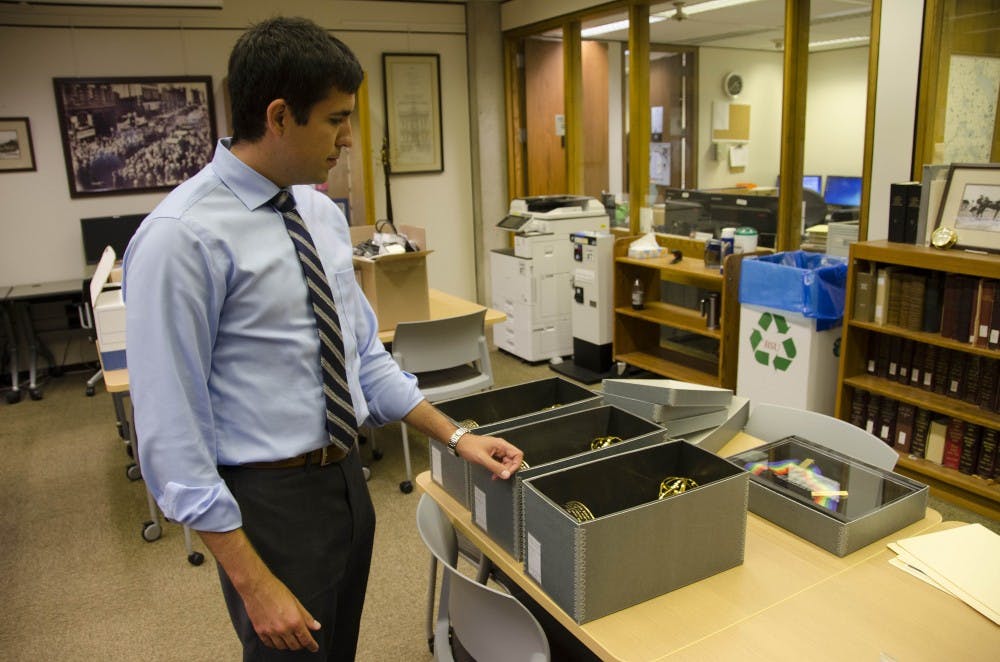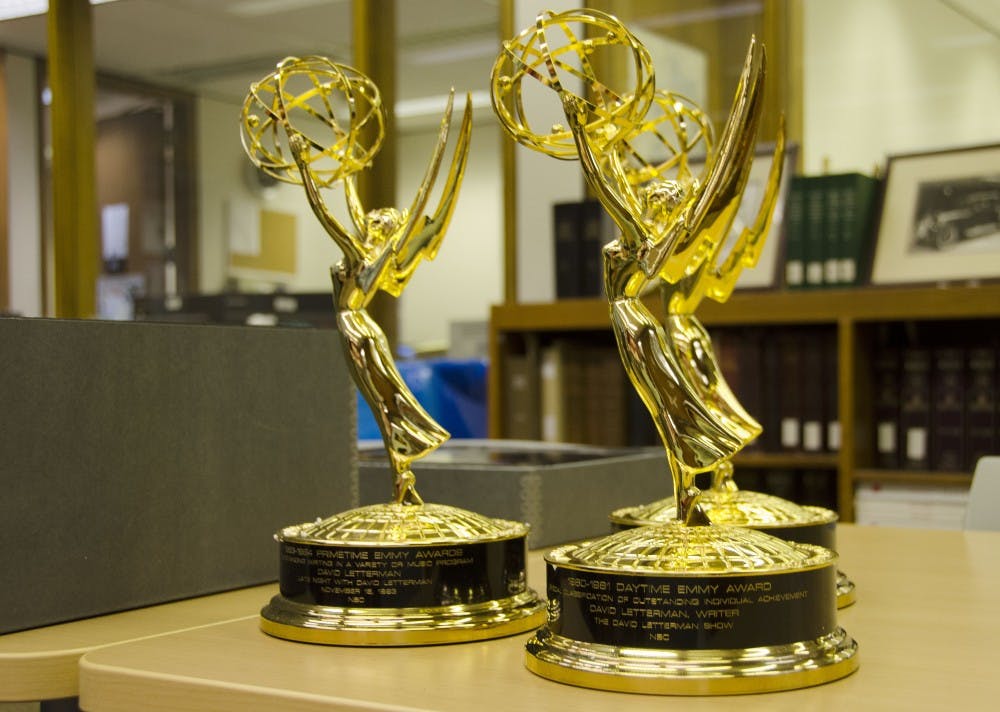It’s been almost two years since David Letterman announced that he was donating his collection of memorabilia and awards to Ball State University.
While there were plenty of institutions that wanted the collection, according to Phil Repp, dean of the college of architecture and committee chairman of the collection, there was never any doubt where the material was going to go.
“As I understand the history, there was a number of people vying for this and what I heard under President Ferguson’s leadership, [Letterman] said ‘Nope, it’s going to Ball State,’” Repp said.
Following the announcement of the donated items during Letterman’s appearance with Bennett Miller and Spike Jonze in 2015, a committee was formed. The committee, consisting of faculty members from across campus, were selected to discuss and approach the collection, figuring out how to preserve and show off the materials to the public.
There were conversations the first year the committee was formed, but Repp says no one knew what to do with it because there were no materials in hand. But since the first shipment arrived in August 2016, Michael Szajewski, head of Ball State's archives and special collections, began organizing and archiving the material.
That process began in August 2016, when the first shipment containing awards, parts of the late show set, photographs and more arrived at the university’s library. Since then, more than 1,000 pieces were shipped over the course of the year, with the most recent pieces coming last spring.
“We weren’t supposed to talk about it because we didn’t know what was coming in, but it was kind of exciting time because everything was wrapped up in boxes and things,” Repp said. “Michael did an excellent job in his calm way, going through, listing the materials and fun stuff like that.”

Michael Szajewski, head of Ball State’s archives and special collections, sifts through a number of David Letterman’s Emmy Awards. The late-night talk show host donated more than 1,000 items to Ball State University. Robby General, DN
As different pieces of the collection came in, Szajewski worked with his staff in archives and special collections to inventory, organize and arrange the pieces of the collection. It’s a process that archives are still working, on a year later.
“We’re pretty solidly moving along with that process, we’re researching some historical information on the items so that we can get the proper context,” Szajewski said. “Once we finish with all of that, we will create what we call a finding aid, which is basically an inventory of collection materials, we’ll make that available to the public and then the collection’s available.”
Some of the more important pieces of the collection have already been released to the general public and Ball State’s library’s archives and special collections office recently released a Top Ten list of things in the collection.
Archiving all of the information should be done in the coming year, Szajewski said, but he doesn’t have a specific timeline. While Szajewski understands the eagerness among both the students and general public to see what’s in the collection, he says that the committee wants to “make sure that we’re thorough with our planning.”
Thorough planning is something that Repp preached as well.
“The collection is really cultural history,” Repp said. “How he moved from a small Indiana community to Ball State to Los Angeles, and ultimately New York City. I think those are thing that we ultimately want to trumpet. Trumpet in a sense to our students that this is one of you.
“I think all of that is what’s important to communicate and preserve, so I think that’s where we want to push that conversation.”
So what’s next after all of the information is archived? Repp says a series of three conversations will happen between everyone on the committee.
According to Repp, these conversations are going to focus on ensuring everything’s archived, finding the best way to display the information and how certain pieces of the collection can be digitized for the public to view.
Repp says the committee plans on getting back together either later this month or early in September to figure out exactly how they’re going to display the collection. It’s easier said than done when it comes to certain items in the collection – like the “Late Show” marquee, which measures almost 20 feet across.
Some of these conversations have begun, but nothing has been determined by the committee up to this point.
Top Ten List of items in the collection
- Emmy Awards: Fifteen Emmy Awards won by Letterman from “The David Letterman Show,” “Late Night” and “The Late Show.”
- Kennedy Center Medal: Letterman’s Kennedy Center Honor medal from 2012. Other honorees that year included actor Dustin Hoffman and Led Zeppelin’s lead singer Robert Plant.
- Obama Photographs: Signed photographs from President Barack Obama and First Lady Michelle Obama of their guest appearances on the “Late Show.”
- Letter to Gary Owens: A letter from Letterman to radio announcer Gary Owens (Rowan & Martin’s Laugh-In) seeking career advice, 1969.
- Jimmy Carson photographs: Photographs of Letterman with mentor Johnny Carson.
- Audio, video and film recordings: More than 50 audio, video and film recordings mostly documenting Letterman’s early career, including his work at Ball State’s WBST radio station and as a broadcaster and weather reporter at Indianapolis television station WLWI (now WTHR).
- “Late Show” set: Host desk, guest chairs, stage platform, etc.,from the set of “Late Show” at the Sullivan theater.
- “Late Show” marquee: A blue and gold “Late Show” marquee from the Ed Sullivan Theater measuring almost 20 feet across.
- Early-career photographers: Sixteen early-career photographs of Letterman as a stand-up comic and newscaster in the 1970s.
- Letterman jackets: Twenty-seven commemorative “Late Night with David Letterman” and “Late Show with David Letterman” jackets, a limited number of which were handed out every year as Christmas gifts to staff and close friends.
Source: Ball State University library, archives and special collections office.





